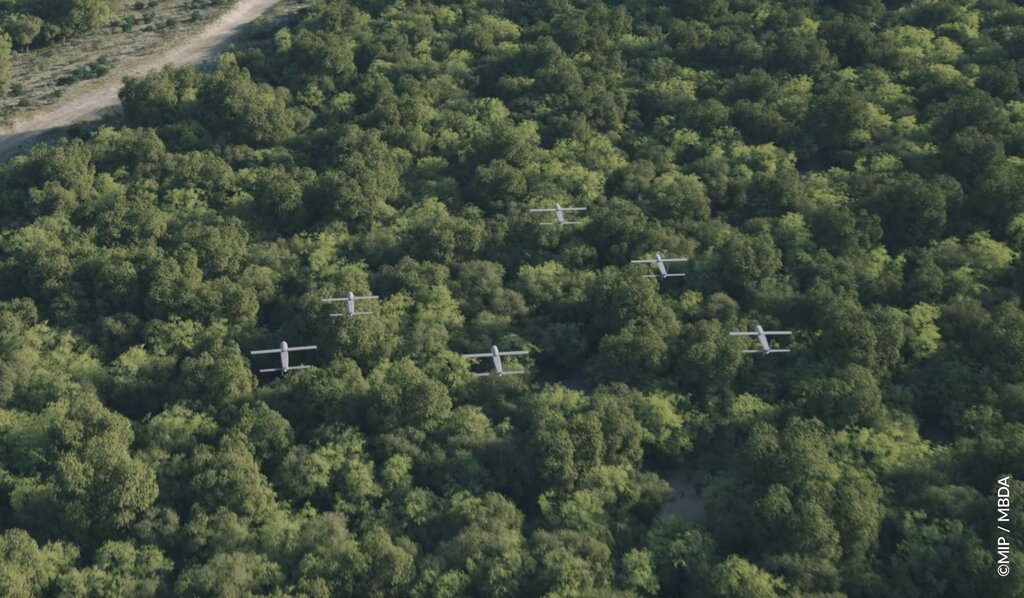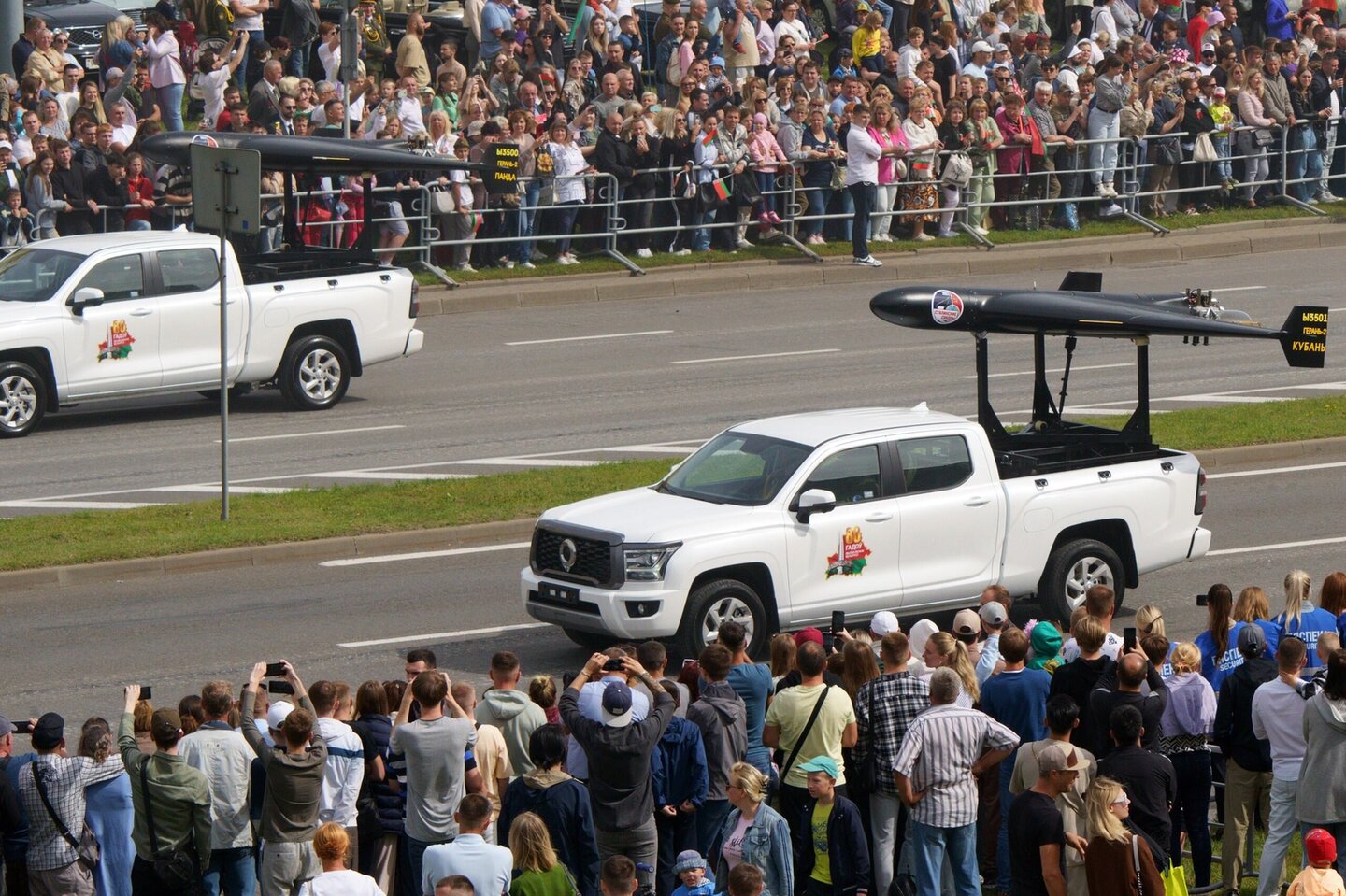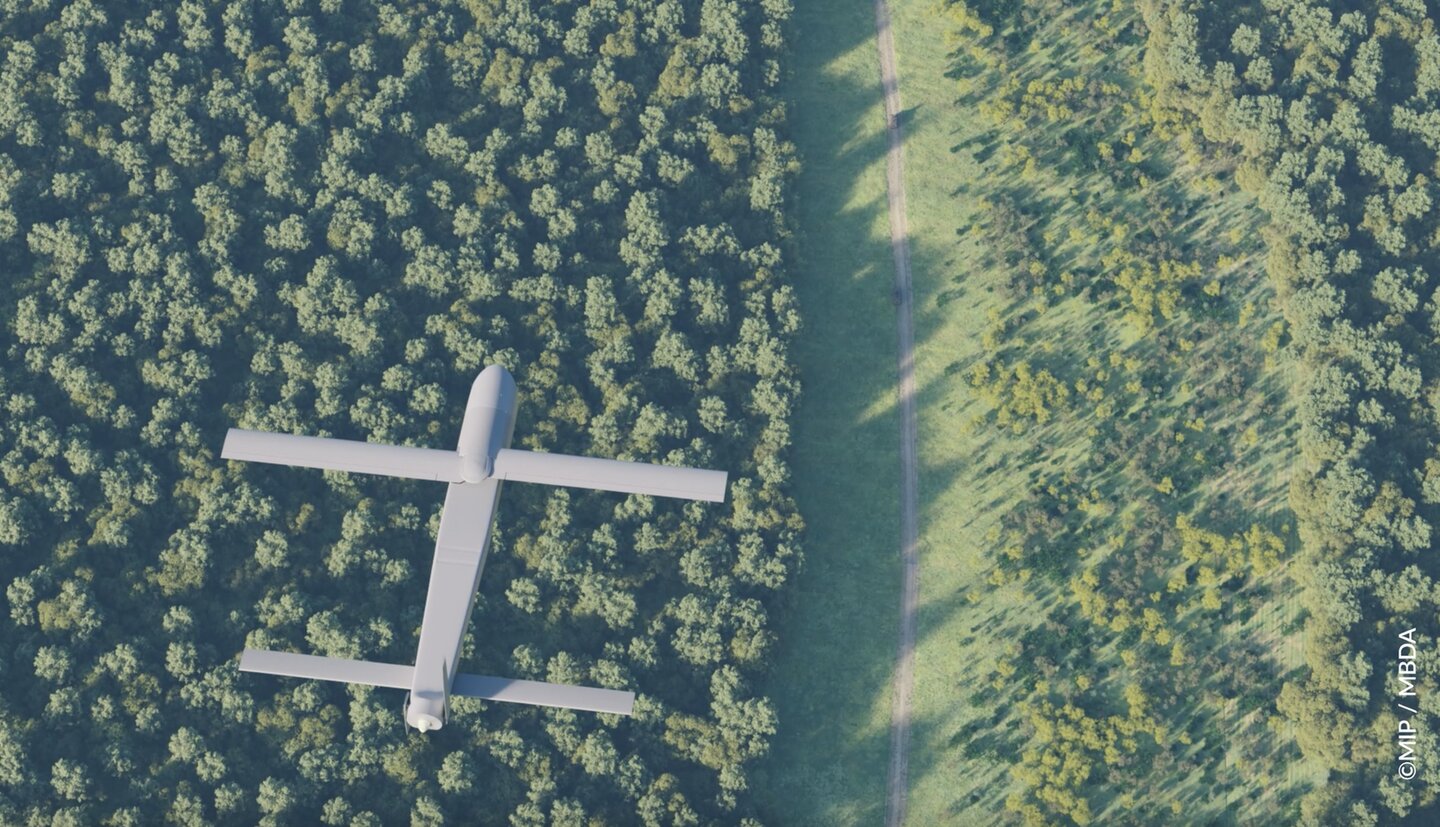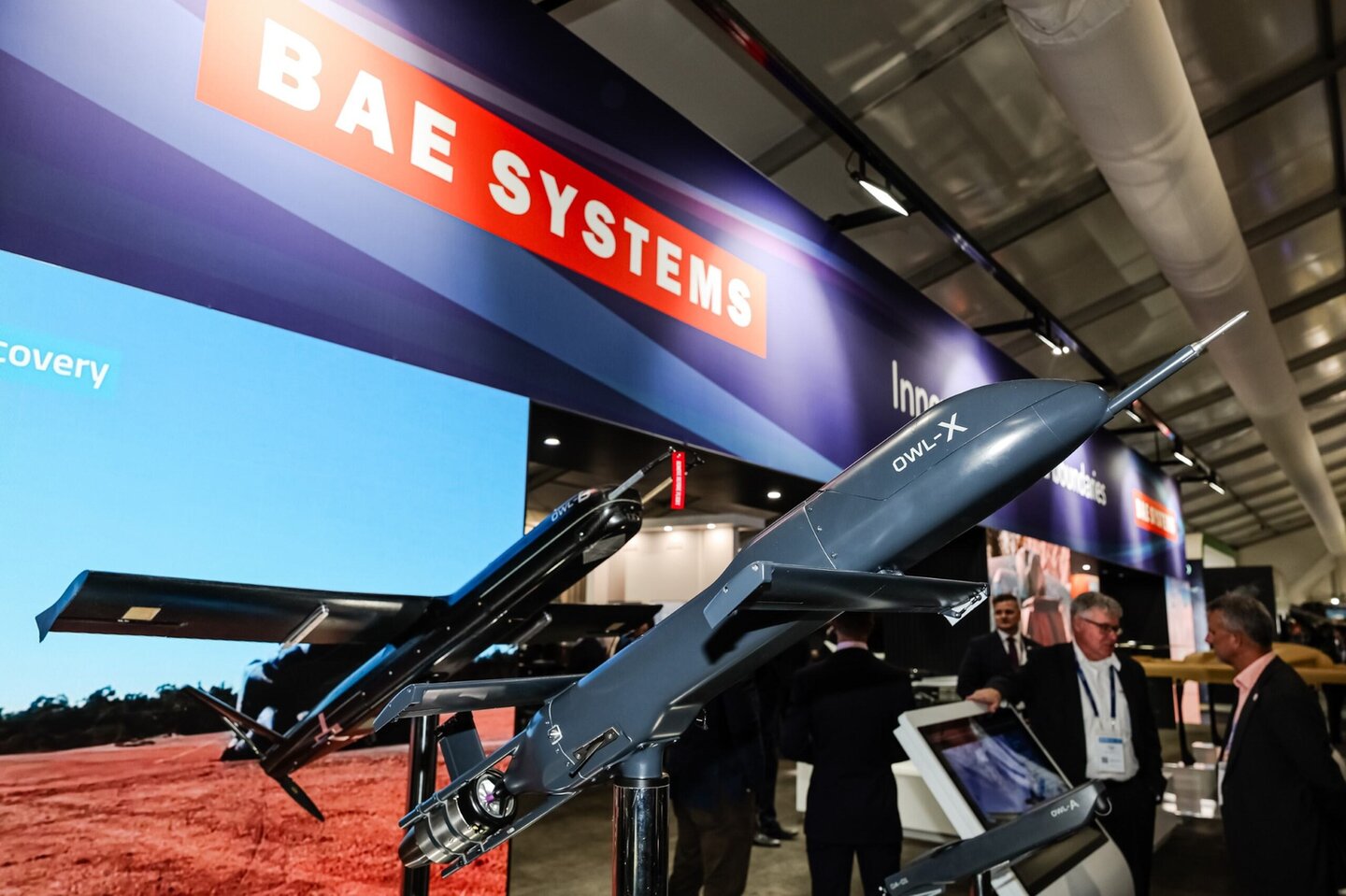Feature
Kinetic energy: Europe’s PLM surge
Loitering munitions are increasingly being considered as vital military tools for Europe‑based militaries. Neil Thompson reports.

European militaries are recognising the role of loitering munitions. Credit: MBDA
Drone warfare has had a major impact on modern militaries’ tactics and strategies in recent years, and the significance of precision loitering munitions (PLMs) — so-called suicide or kamikaze drones — has been one of the biggest ways drones have changed battlefield operations.
Actors with powerful drone fleets of loitering munitions possess the ability to search, monitor, and attack hidden or temporary targets without risking their own high value assets. Such advantages have proven decisive in modern inter-state conflicts like the Second Nagorno-Karabakh War in 2020.
In recent years as the technology for loitering munitions have improved and become more widespread, even non-state actors like Sudan’s paramilitary Rapid Support Forces have begun to employ these weapons systems in significant numbers.
Companies are now increasingly focused on mass production to meet the rates of expenditure PLMs experience during conflicts, and on new designs to take advantage of drones’ improving technological capabilities and effects.
Precision strike, at low costs
Loitering munitions increasingly allow precise strikes against enemy targets, with a significant effect on location struck, but without causing the attacker collateral damage. PLM fleets are also compatible with ‘low cost’ expectations for mass production and use, providing a capacity to saturate an enemy target even with anti-drone and anti-air defences.
The war in Ukraine has seen a rapid evolution in the design, manufacturing and use of PLMs on the battlefield; and in particular a realisation that against a conventional military enemy with its own drones, enormous numbers of PLMs are required to sustain battlefield operations. Ukraine is on track to build between 2.5 and three million military-use drones in 2025, largely cheap kamikaze designs equipped with anti-tank munitions or anti-personnel grenades.
Meanwhile, on 18 May, Russia launched a record 272 attack drones against Ukraine, largely consisting of Shahed one-way attack munitions. The Ukraine-Russia conflict has served as a wake-up call to other European militaries about the need to expand their PLM fleets in range of designs and numbers.

Iran’s Shahed 136 has found willing customers in Russia and Belarus. Credit: Dmitriy Drozd / Shutterstock
Companies in the European defence market are now responding to the fact the loitering munitions market there is evolving rapidly, driven especially by new discoveries in the recent high-intensity conflicts between states in Eastern Europe.
Facing a sophisticated state level adversary like Russia again means Western militaries’ loitering munitions requirements will require a range of PLMS. These will range from new low tier products, allowing massive production with low-cost components that mitigate their efficiency and reduce their operational lifetime, to a higher tier of fewer PLMs, but ones characterised by improved efficiency and lifetime length.
Only by buying a range of different PLM products will Western armed forces in Europe or in other theatres be able to fulfil their range of missions in potential future high-intensity conflicts where drones are increasingly central components. Designed and produced for a range of uses on the battlefield, the modern PLMs are likely to remain a profitable market segment for defence vendors on the continent over the coming decade.
France and Italy Seek New PLMs
Europe-based vendor MBDA is currently working on PLM products for clients in France and Italy based on its Akeron missile family. To this end, the company is developing two loitering munitions to fulfil the Italian army's requirements.
The first is for an urban battlefield, with a rotary-wing quadcopter and a range of up to five kilometres. It can also fulfil various missions, such as target acquisition and precision strike. The second belongs to the short-range class, with a range up to 20km for use against light vehicles and to counter semi-fixed positions.
In France meanwhile, MBDA has developed two new loitering munitions systems through the French defence innovation agency (Agence de l'innovation de défense (AID)) and in partnership with two well-known and confirmed UAV manufacturers. The Akeron RCX 50 resulted from cooperation as part of the French Colibri project, while the Akeron RCH 170 was developed in collaboration with Delair to meet the needs of France’s Larinae project.
Developed in cooperation with Novadem, the Akeron RCX 50 is the smallest loitering munition developed in France by MBDA, with a range of 5-10km. It is deployable in less than five minutes, and its rotatory airframe wings allows for flexible flying trajectories. This helps it when it is operating in urban terrain, as it can swiftly follow the geometry of the building, something more difficult for a fixed wing system.

MBDA is working to provide France and Italy with PLM systems. Credit: MBDA
The RCX 50 was successfully tested in March 2025, and the company plans to start for production at the end of 2025, with first deliveries in early 2026.
Meanwhile, MBDA developed the bigger and heavier Akeron RCH 170 in collaboration with Delair, producing a long-range system that is deployable in ten minutes and able to perform reconnaissance missions and precision strikes up to 50 kilometres.
The RCH 170 can complement artillery in the fire support zone, its targets of choice being static and mobile armoured vehicles, and notably, tanks. Since summer 2024, a demonstrator has been flying while inert firing tests on fixed and moving targets are planned for summer 2025.
A MBDA spokesperson said: “Both loitering munitions are part of the Akeron family due to their 'beyond line of sight' capability. MBDA loitering munitions have precision capabilities to localise and identify targets in difficult-to-access environments, enabling observation and neutralisation missions.
“The choice of the target and the engagement depends on operator discretion, preserving the human in the loop."
BAE launches OWL PLM upgrades
MBDA is not the only defence vendor in the European market launching new PLM families of products this year, with British-based multinational aerospace, military, and information security company BAE Systems and its partners developing new products in 2025.

BAE Systems is developing loitering munitions. Credit: BAE Systems
BAE Systems and its partner Innovaero announced in March an upgrade to their OWL B PLM that increased its guidance capabilities. The OWL B has been the focus of an exhaustive series of live fire tests for the Australian army and other Commonwealth countries, and completed a successful series of flights, plus payload integration.
Global conflicts continue to highlight the crucial role of autonomous systems and precision loitering munitions.
Marcus Colman, Innovaero’s Chief Executive Officer
The two companies also unveiled the OWL A PLM, a low cost, mid-weight loitering munitions variant, at this year’s Avalon 2025 defence show. The new model carries a 1.5kg warhead, can travel up to 45 kilometres and operates with a full suite of intelligence, surveillance and reconnaissance capabilities.
Marcus Colman, Innovaero’s CEO, said “Global conflicts continue to highlight the crucial role of autonomous systems and precision loitering munitions. Building on the success of the OWL B program, our decision to expand a wider family of loitering munitions offers the customer a full suite of capabilities and is a major milestone for the nation's defence industry.
“With the addition of the OWL X test demonstrator and development work now underway for OWL A, Innovaero is fast establishing a sovereign capability for loitering munitions that will outperform any rival capability in the world.”
PLMs a growth sector in uncrewed combat
With European countries increasingly moving to raise their defence budgets amid geopolitical uncertainty over the continent’s future and changing technologies, vendors are likely to continue to experience new opportunities to sell PLM products into regional markets.
Analysis conducted in 2025 by GlobalData indicated that the global military UAV market, valued at $13.6bn in 2025, was projected to grow at a compound annual growth rate (CAGR) of 6.3% through to 2035.
Of the five markets in the report, comprising High Altitude Long Endurance (HALE) drones, PLMs, Medium Altitude Long Endurance (MALE) UAVs, tactical UAVs, and target drones, the PLM segment was forecast to have the highest CAGR, forecasting a CAGR of 7.4% over the period.
Across the global UAV market, which includes PLMs as a market area, Europe was forecast to capture a 36.1% share, behind only the Asia-Pacific region.
Given this, European countries may also wish to coordinate their purchases with other Western countries like Australia or the US to ensure interoperability in the event of a future security crisis.
Moreover, conflicts like Ukraine will continue to drive research and development in the field, ensuring that the PLM segment of the drone defence market will continue to experience rapid technological evolution over the coming years. As a result, the sector will continue to be a profitable one for defence companies.

Dr Al Allsop, Combat Air and Synthetics SME, Inzpire. Credit: Inzpire
The data is gone; you have lost 30 years of insight.
Nick Campion, managing director, VRAI
Caption. Credit:
Total annual production
Australia could be one of the main beneficiaries of this dramatic increase in demand, where private companies and local governments alike are eager to expand the country’s nascent rare earths production. In 2021, Australia produced the fourth-most rare earths in the world. It’s total annual production of 19,958 tonnes remains significantly less than the mammoth 152,407 tonnes produced by China, but a dramatic improvement over the 1,995 tonnes produced domestically in 2011.
The dominance of China in the rare earths space has also encouraged other countries, notably the US, to look further afield for rare earth deposits to diversify their supply of the increasingly vital minerals. With the US eager to ringfence rare earth production within its allies as part of the Inflation Reduction Act, including potentially allowing the Department of Defense to invest in Australian rare earths, there could be an unexpected windfall for Australian rare earths producers.
